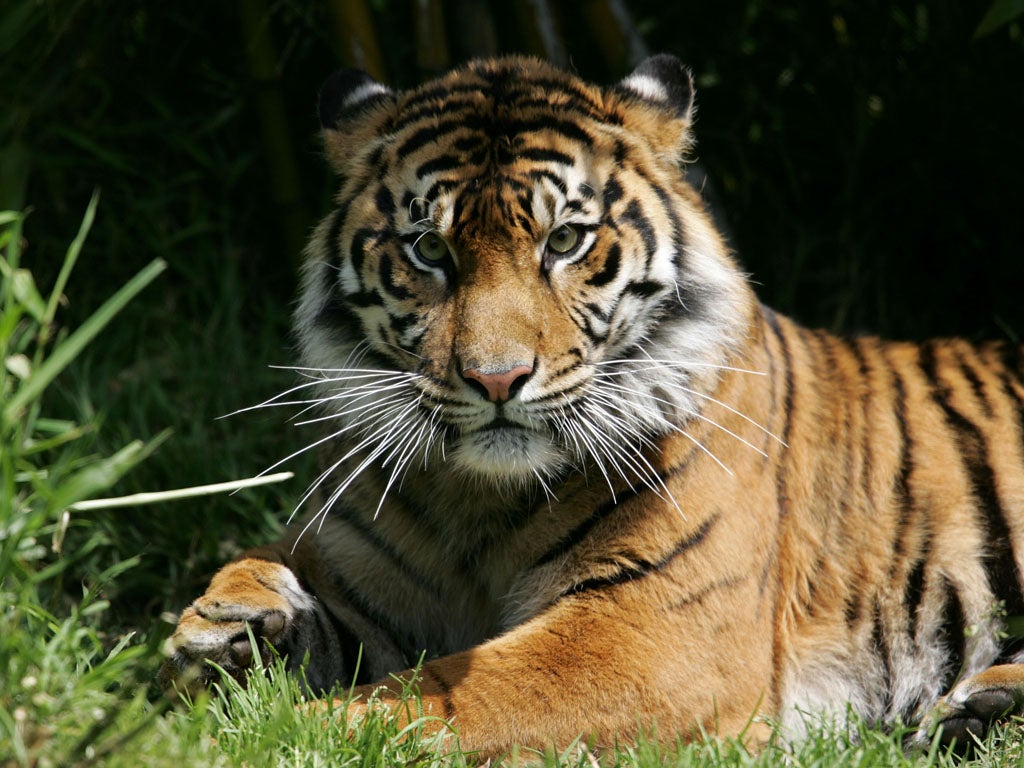There's no tiger without 'taiga': how Russians are fighting the decline of these beautiful cats
In the first of an occasional series, our writer on the eastern fringes of Russia reports on the conservationists who are trying to save the Amur Tiger

Your support helps us to tell the story
From reproductive rights to climate change to Big Tech, The Independent is on the ground when the story is developing. Whether it's investigating the financials of Elon Musk's pro-Trump PAC or producing our latest documentary, 'The A Word', which shines a light on the American women fighting for reproductive rights, we know how important it is to parse out the facts from the messaging.
At such a critical moment in US history, we need reporters on the ground. Your donation allows us to keep sending journalists to speak to both sides of the story.
The Independent is trusted by Americans across the entire political spectrum. And unlike many other quality news outlets, we choose not to lock Americans out of our reporting and analysis with paywalls. We believe quality journalism should be available to everyone, paid for by those who can afford it.
Your support makes all the difference.The dramatic setting of Vladivostok, Russia’s easternmost major city, is bound to prompt comparisons with other great bayside cities, but it was Nikita Krushchev who really threw down the gauntlet. So impressed was the Soviet leader by San Francisco and the Golden Gate bridge when visiting the United States in 1959, that on his way home he stopped off here and exhorted the locals to turn the city into “our San Francisco”.
Over half a century later, ‘Vlad’ finally has its suspension bridge – two, in fact – part of a controversial facelift that saw the city engulfed by a frenzy of construction in preparation for last month’s Asia-Pacific Economic Cooperation Forum.
Krushchev may well have welcomed the new bridges but I’m doubtful that he would find much else to approve of here. Walking along ul Svetlanskaya, one of the city’s main thoroughfares and still with many of its elegant Tsarist buildings intact, I’m seeing little of the forbidding greyness and uniformity I had been led to expect. The last major Russian city to fall to the Bolsheviks (as late as 1922) and closed to foreigners from 1958 to 1992, Vlad spent much of the last century in a state of suspended animation. Now it’s rushing to join the party and no holds are barred. Yet for every cappuccino on offer in the stylish cafés there’s a pensioner eager to tell me how the new highways have cut her off from the local shops and that she can’t afford to pay her utility bills.
But alongside the brutish capitalism of contemporary Russia have come other developments, among them the glimmers of awareness that perhaps man cannot live by conspicuous consumption alone and that the environment might be worth keeping an eye on. Emblazoned on the city’s coat of arms is a tiger, a symbol of the huge tracts of forest – confusingly (to Anglophone minds, at least) called taiga in Russian – from which Vlad was carved in the 19th century.
The big cats – known locally as Amur tigers – feature prominently in the city’s iconography and as late as the 1980s were still wandering into the suburbs, but the collapse of the Soviet Union led to a big surge in poaching. Tiger numbers fell dramatically and with continuing strong demand for their derivatives in Chinese traditional medicine, they remain under intense pressure here. China is only four hours away by road.
The Russian response to the tiger slaughter in the early 1990s was to set up an impressive network of anti-poaching teams, an approach that has proved largely effective. But the game is now being moved on, thanks to the more environmentally focused among Russia’s rapidly proliferating cadre of NGOs. “There’s no tiger without the taiga”, says Sergei Bereznuk, director of the Phoenix Fund, a small local NGO working to promote a more holistic approach to conservation.
I saw the power of the new attitude yesterday (Sunday 30 September), when Vladivostok’s 13th Tiger Festival brought over 7,000 people to the streets in a parade characterized as much by calls for respect for the taiga ecosystem generally as for the tigers themselves. Meanwhile, local conservation figures are attracting increased international attention – Bereznuk for example was recognised recently by Rolex, the luxury watch brand, as one of its biennial enterprise laureates. I dread to think what Khrushchev might make of that, but then there’s not much of contemporary Vlad that would fit with his 1959 vision for the city.
Join our commenting forum
Join thought-provoking conversations, follow other Independent readers and see their replies
Comments